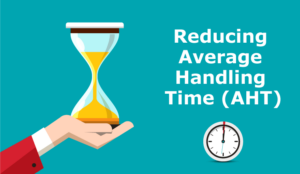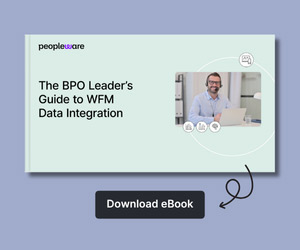What can we do to reduce customer effort and make like easier for our customers?
Here some of our panel share their tips.
1. Don’t make customers have to give their details more than once

Susannah Richardson
Why do we still have to enter all our details in an IVR platform, then invariably have to give them again to the agent who finally gets to us and sit waiting on the phone whilst they re-enter our details and establish the background to our request. This should all be available through CLI and desktop integration.
Susannah Richardson, mplsystems
2. Put the caller through to the last agent they spoke to
We recently bought an add-on for our telephony system at a cost of about £400 which will recognise a customer’s number and where possible put them back through to the last person they spoke to. It will also recognise if they were cut off and put them back in their original place in the queue, again with the same agent if available.
3. Reduce the number of call-backs from the letters you send
There is nothing worse than when you send out a letter and a customer has to call because they do not understand it. Set up a reading group, get feedback from different staff members across your business. Do they understand the letter? Get them to have some friends or family members read it. Do they understand it? Obtain feedback, implement it, and that line you may have in your letter “you do not need to do anything” may work.
Luke Clarke, Client Services Manager, Novia Investment Services LTD
4. Multi-skill your front-line agents
One way to improve your customer effort scores is to have multiple task levels to answer customer questions. If the question is easy, the first level can answer. But if it’s harder to find a solution, another service level is needed.
It’s easier to manage different human resources within different services and there is a better chance of resolving the case with clear communication. However, this can be costly and the average call length time could increase, despite the fact that First Call Resolution is lowered.
5. Use web self-service

Benoit Bourde
Self-service databases or forums/social networks could resolve difficult customer issues. The company could provide these services in order to reduce the average call length. But in this case, satisfaction (CSAT) and (FRC) are shown to reduce. This can be dangerous because these 2 metrics are only visible several weeks after the initial contact, by which time we could see turnover going down, churn increasing and poor results from customer satisfaction polls.
There are some innovative solutions which exist to provide a view of cross-channel events which will be visible on sales / customer service screens.
6. Provide agents access to related documents
Upgrade the access to available technical/marketing/communication/legal … company documents. This would allow the initial agent to answer more questions than currently possible with a classic CRM.
Benoit Bourde – Exalead Dassault Systemes (www.3ds.com)
7. Use the Calling Line Identity (CLI)
One option that is often overlooked is taking advantage of the information which is available to companies just through utilising the calling line ID. By using a system that can recognise who is calling, the call can then be routed intelligently to the correct agent. They can then handle the call easily without having to pass the query elsewhere. This results in the customer’s issue being dealt with quickly and efficiently, without them being kept on hold.
8. Use social media to route calls intelligently
In recent years, social media has put extra pressure on businesses to deal with customer complaints or issues quickly and effectively. Through utilising social media and understanding the social influence that the individual callers have, businesses can use this information to route their calls intelligently and use a caller’s social media content to understand the background of the enquiry. This can help prevent any negative experiences that could be shared online.
9. Draft in more agents based on demand

Paul Turner
Many contact centres deal with fluctuating peak times and this often results in callers listening to an engaged tone, or being put on hold until an agent is available.
Businesses should look for a flexible solution that allows them to draft in more or fewer agents quickly, depending on demand. This can be achieved by using a cloud contact centre. Agents can connect to the system remotely. All they need is a phone and internet connection. This gives contact centre managers the ability to react quickly to demand and cut call waiting times so that no caller has an excessive wait time.
10. Play an estimated wait time
One perception of a contact centre is that of mindless, confusing IVR menus, which are often difficult to use and end up in callers being connected to the wrong call handler. Using calling line ID, contact centres can tell who is calling and what their last query or purchase was.
Personalised messaging can then be provided that answers their pre-empted questions. For example, where is my delivery? The system can play the caller the estimated time of arrival of their delivery.
Paul Turner, Chief Operating Officer of NewVoiceMedia (www.newvoicemedia.com)
11. Make a list of where, how and why your customers interact with you
It is a bit baffling to see that the idea of “customer effort” should suddenly be in vogue. It should have never been out of vogue. Basic rule in sales is “Make it easy for the customer to buy.” Basic rule in customer relationships is “Make it easy for the customer to do business with you.”

Steven Schwartz
Any interaction with a customer should first be viewed through the lens of a quality customer experience. To make things easier for customers, begin by thinking like a customer.
Make a list of where, how and why your customers interact with you. Now look at that list through the following filter:
- Simplify each part of the interaction.
- Reduce the time it takes to interact.
- Make sure it is now easier to reach the objective of the interaction.
- Exceed customer expectations!
Think like a customer. Not difficult. You have been one your whole life.
Steven J. Schwartz, International best-selling author, @withtheSchwartz
12. Review the customer engagement process

Richard Farrell
With this in mind, every organisation should regularly review each aspect of their customer engagement process, to ensure that minimal effort is required by the customer to make a successful transaction; especially the points in a transaction, service delivery or customer relationship at which customer expectations are at their sharpest and most demanding. Whether it’s making a purchase, a complaint or a general enquiry, people clearly want their time to be respected. Here are some basic actions that can help to minimise the level of customer effort:
- Keep in-queue messaging fresh and responsive
- Review your processes regularly – right people: right place: right time.
- Analyse contact priorities and how they are dealt with
- Avoid asking customers to repeat information
- Ensure adequate time for advisors to gain and maintain the requisite knowledge
- Create automated options for non-critical enquiries
- Make channel choice and transition easy
- Develop proactive outbound messaging
Richard Farrell, Netcall (www.netcall.com)
13. Use smartphone apps
Use the power of the smartphone! Apps that short-circuit IVR are the way forward: the customer enters all their details via the app, it automatically dials out to the contact centre or customer services department, passing all the details through, so the customer, and let’s not forget the agent, can get straight to the point of what they want to talk about.
Kevin Rogers, Project Manager, mplsystems (www.mplsystems.co.uk)
14. Identify and pre-empt issues
Tangible financial improvements can result from pre-empting future issues during the customer journey—reducing both customer effort and contact volumes translates into operational cost reductions. For example, in the mobile sector this can mean conducting data-mining exercises to identify common handset or price-plan issues.
15. Encourage agent collaboration

Tom Lynam
Many unresolved issues come down to failure to solve a particular problem or poor instruction. By promoting collaboration between front-line staff, common problems around instruction and issue resolution can be improved in the long term.
16. Don’t track the wrong metrics
Too many companies base performance measurement on metrics which offer little business value—average call handling time being the best example. Tracking repeated contacts offers a much more granular and realistic reflection of customer effort on the front line.
Tom Lynam, NICE Systems (www.nice.com)
17. Allow transfers to back-office staff
Integrating the back office with the call centre through a unified communications (UC) deployment provides agents with access to vital information, such as employee presence, availability and contact details. This increases collaboration and communication among employees throughout the entire business and ensures customer queries are resolved quickly and efficiently. For instance, if a customer calls with a complex technical query, the agent can transfer them to the relevant technical engineer, improving the customer experience and helping to increase the centre’s first call resolution rate.
18. Reduce background noise on the call

Richard Kenny
Implementing wireless technology in the call centre can further help to increase employee productivity and collaboration. Agents will be empowered to move around their environment, enabling them to resolve issues more efficiently. Furthermore, by implementing headsets with noise-cancelling technology, and which are easy to use and comfortable, call centres can provide agents with the necessary technology needed to deliver an enhanced user experience.
19. Have executives dial into the call centre anonymously
By dialling into the call centre themselves, purely for training purposes as an anonymous customer, executives, managers and call centre agents can find out first-hand what customers have to go through. This will provide them with better insight into the customer experience and help them to change the process to improve the customer experience.
Richard Kenny, E&A Contact Centre Marketing Manager, Plantronics (www.plantronics.com)
Do you have any tips to reduce customer effort? Please leave your tips in an email to Call Centre Helper
Author: Jo Robinson
Published On: 17th Oct 2012 - Last modified: 10th Sep 2025
Read more about - Customer Service Strategy, Customer Effort, IFS, NiCE, Poly, Richard Farrell, Richard Kenny, Service Strategy, Susannah Richardson, Vonage


















Design “low effort” services and processes
Review all customer interactions, and for each interaction of customer journey check all exchanges with the following questions :
– why do this customer need to give us this information ? can’t we get it by ourselves or why didn’t we register it last time he gave it to us
– why do we ask the customer to do this action : can’t we avoid or make it automatically ?
Finally, “test and try” by yourself : ask process and IT guys to “walk in customer shoes” interacting with their own company and measure the level of efforts it request.